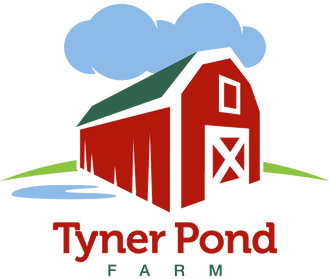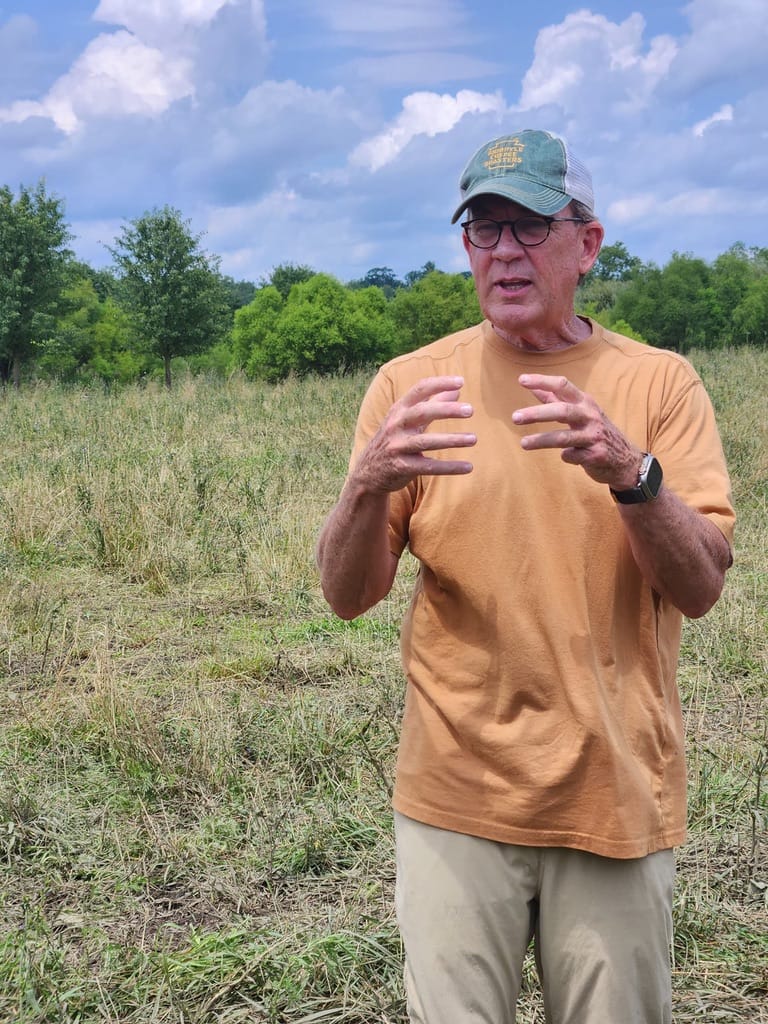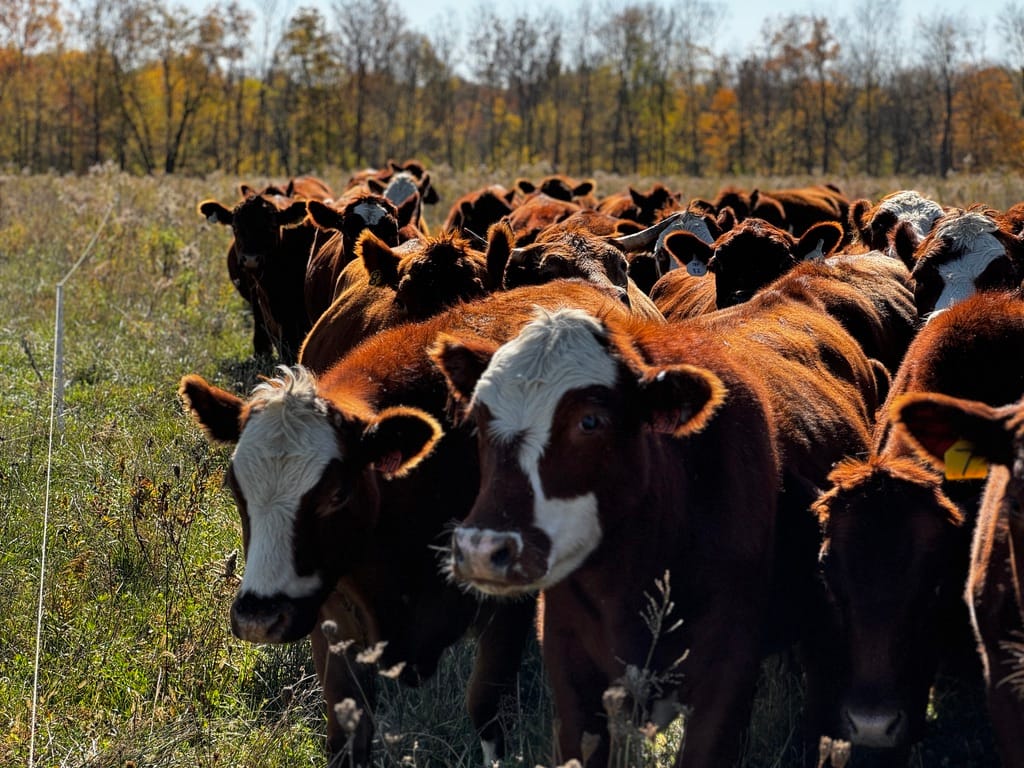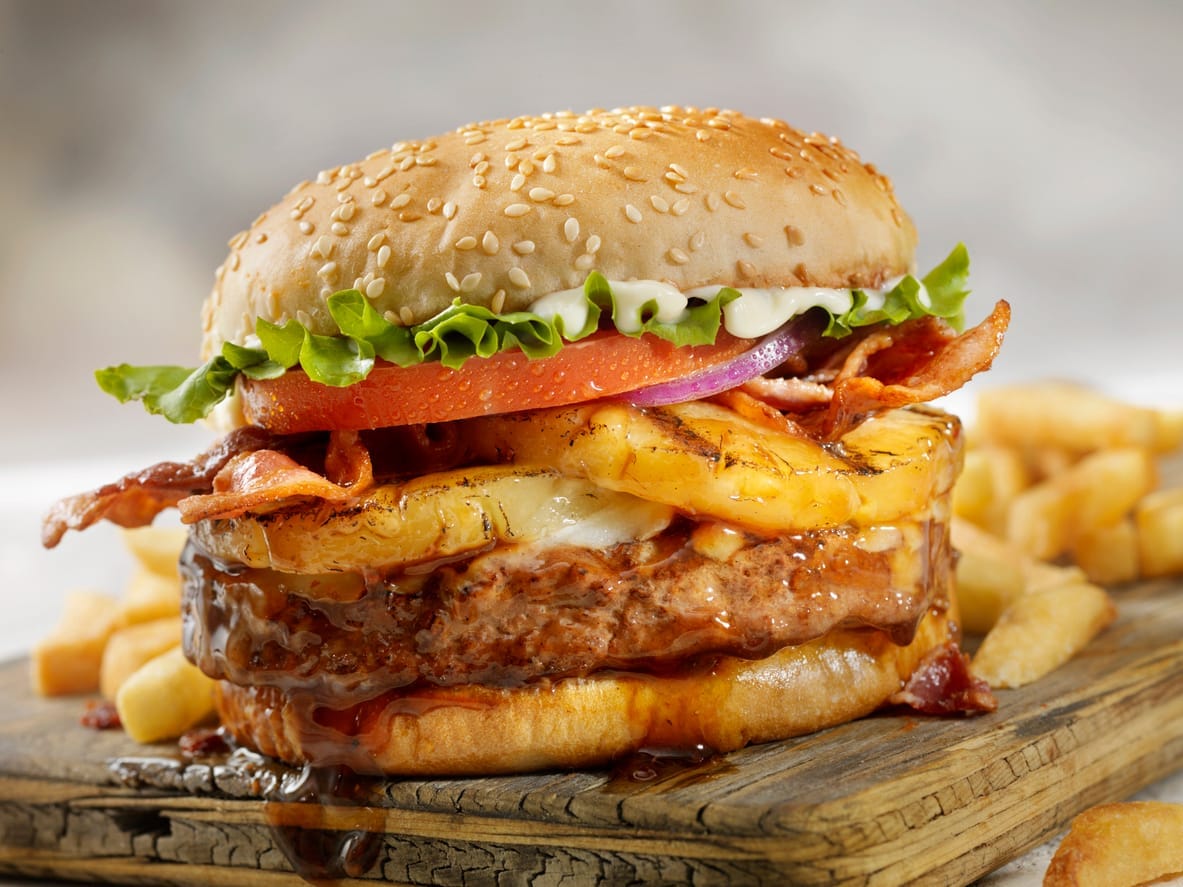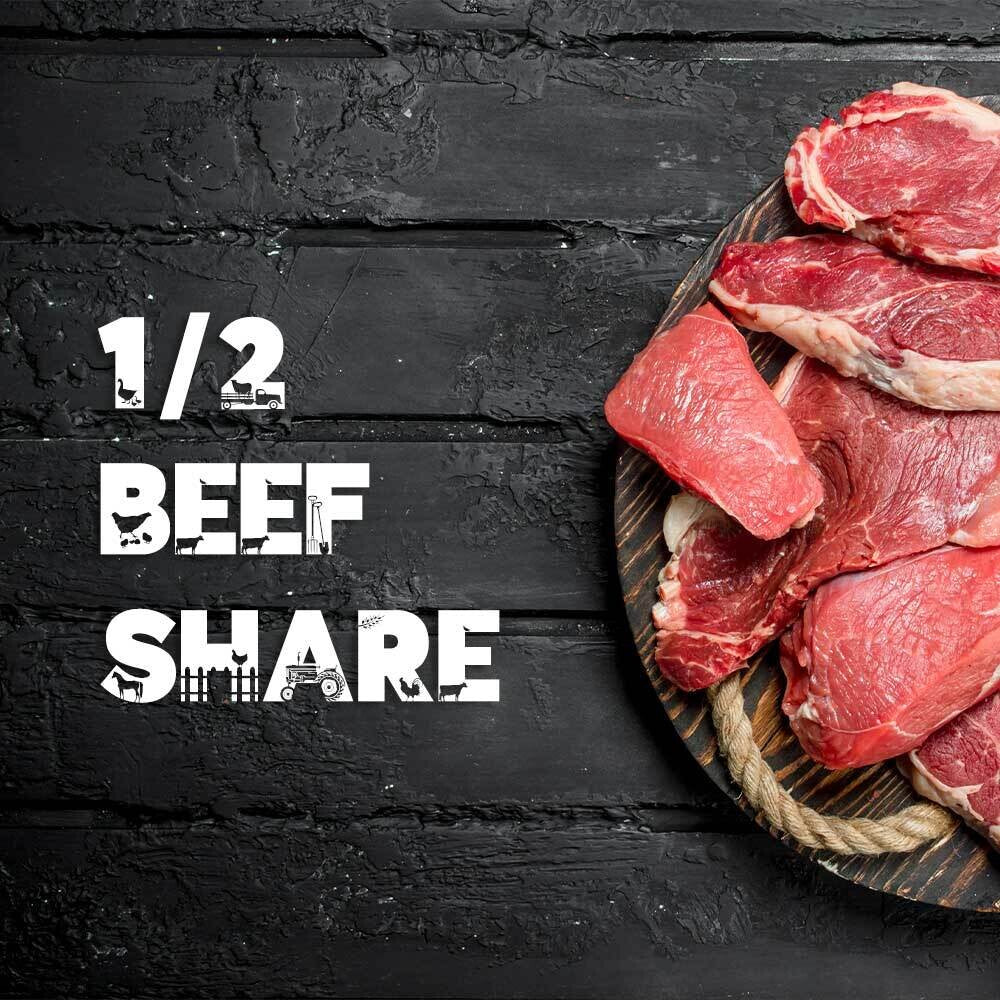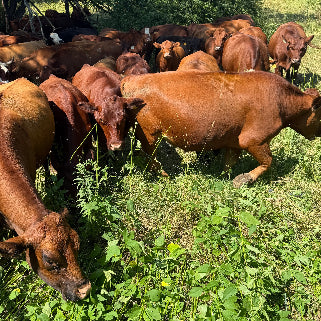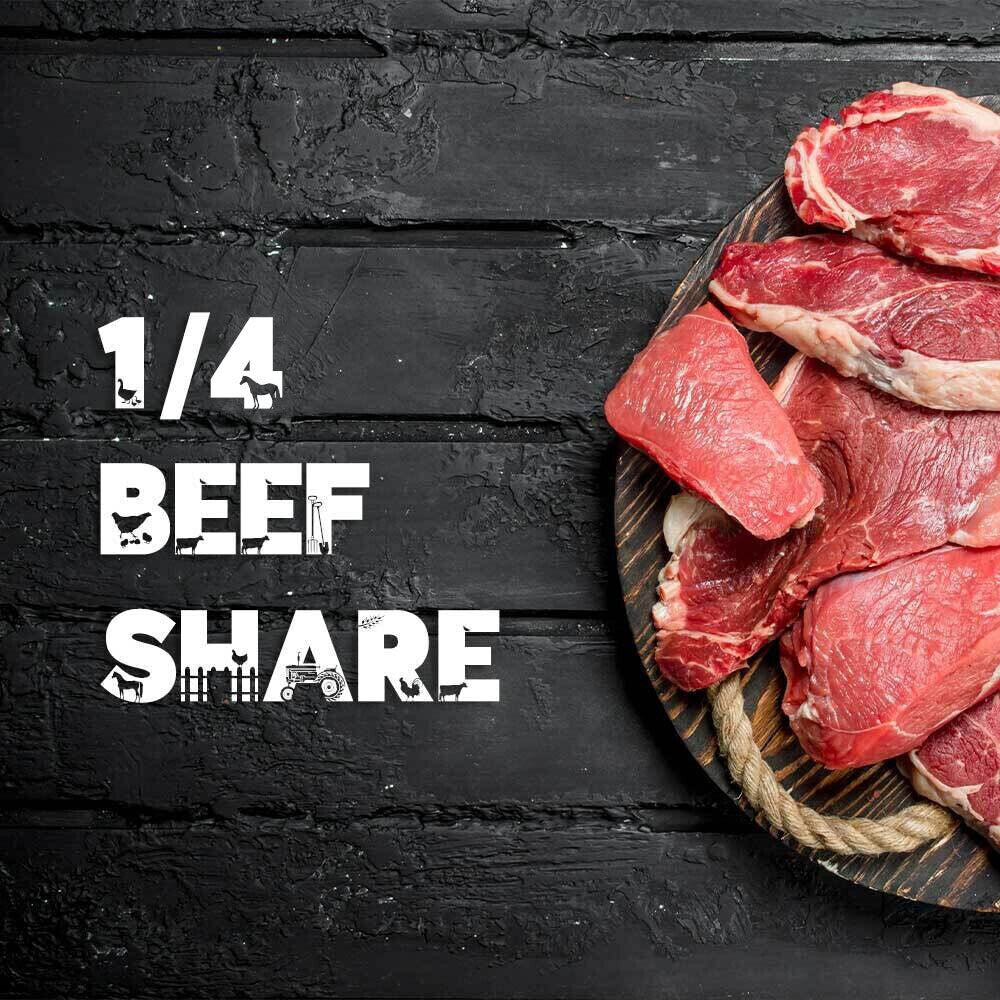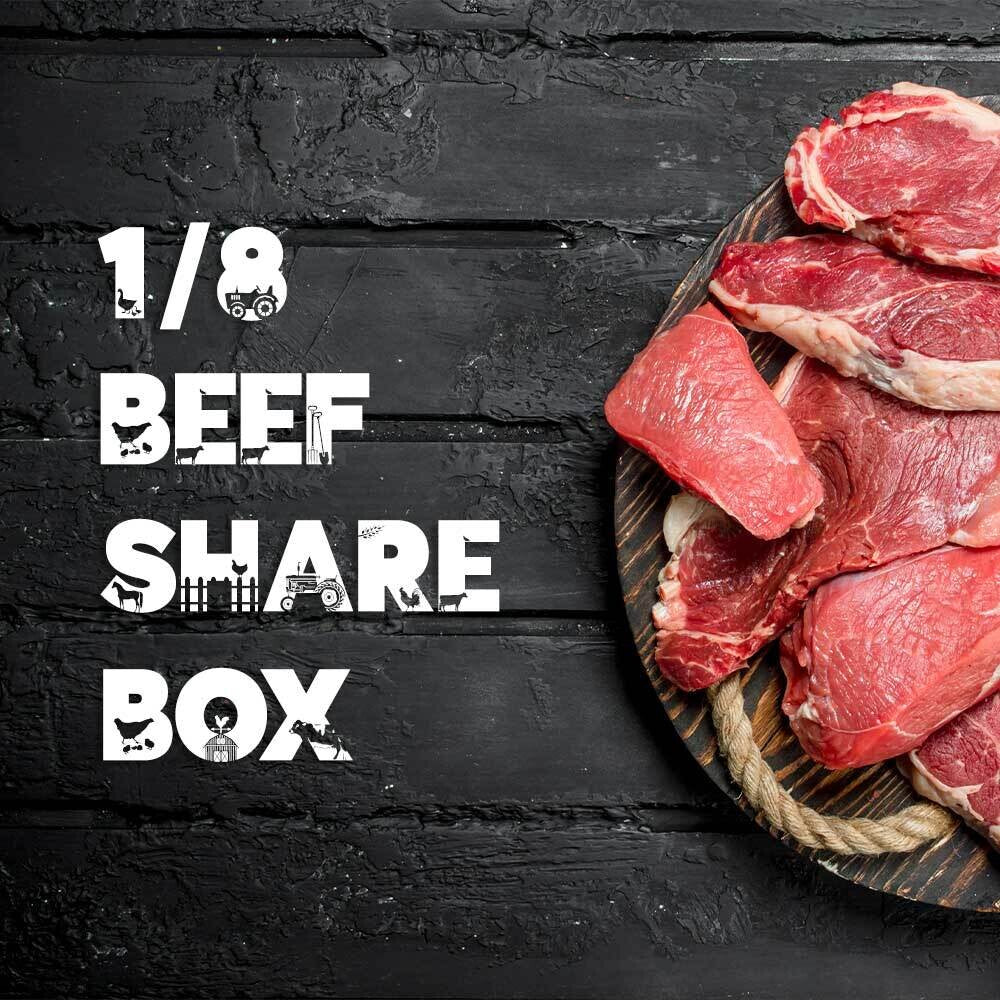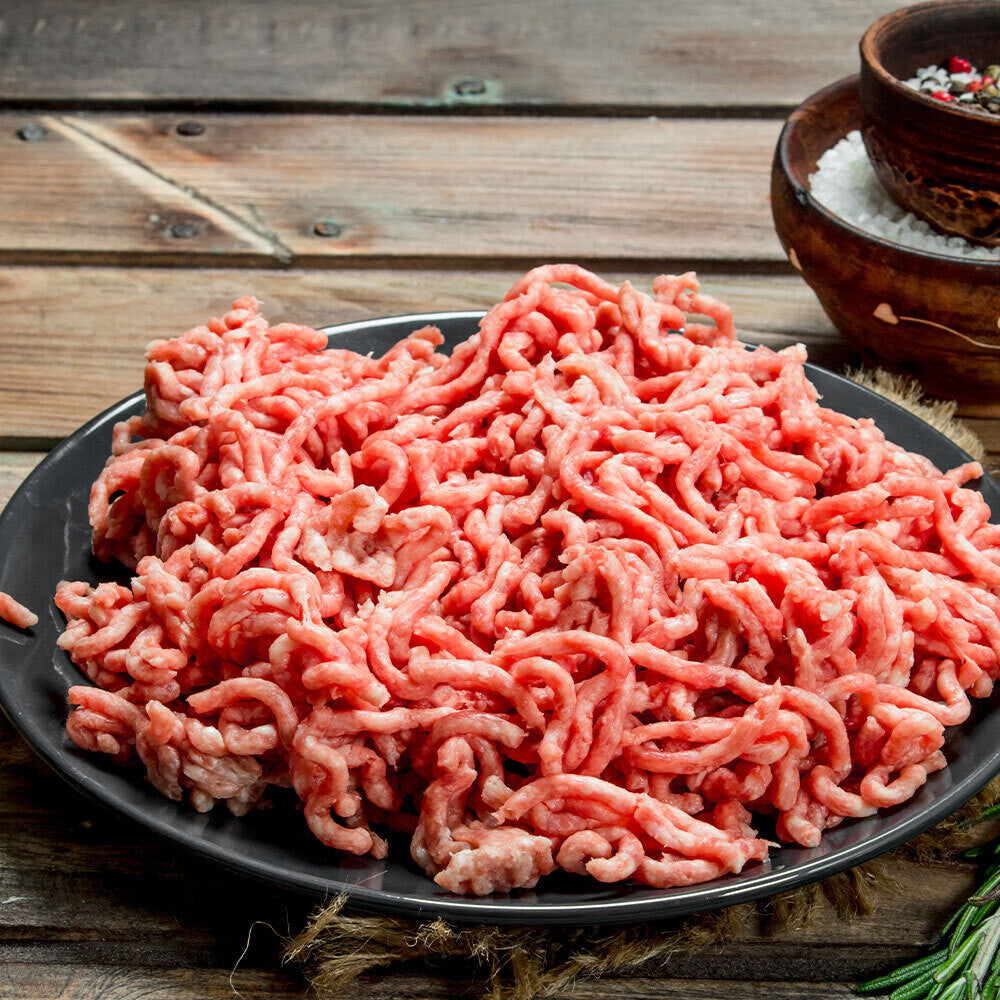
Benefits of Biomimicry in Grazing
Biomimicry is the practice of learning from and emulating nature's designs, processes, and systems to solve human challenges in a sustainable way. In agriculture, this means observing how natural ecosystems function and applying those lessons to farming practices. Instead of working against nature, biomimicry focuses on aligning with its rhythms—building healthier soils, fostering biodiversity, and creating resilient systems that benefit both the land and the animals. It’s about respecting the wisdom of nature and using it as a guide to regenerate and sustain life.
At Tyner Pond Farm, we employ biomimicry in our grazing practices as a way to emulate natural processes and improve the overall health of our farm ecosystem. This approach is deeply rooted in our commitment to regenerative farming methods and holistic management principles.
Holistic Planned Grazing
The core of our biomimicry-inspired approach is Holistic Planned Grazing, which goes beyond simple rotational grazing. This method is designed to mimic the natural grazing patterns of wild herbivores, such as bison, that once roamed our Indiana prairies. Here's how we implement this practice:- Paddock Division: We divide our pastures into smaller sections, allowing for more precise management of grazing intensity and duration.
- Frequent Movement: Our cattle are rotated at least daily, mimicking the constant movement of wild herds in response to forage availability and predator pressure.
- Recovery Periods: By carefully timing grazing and rest periods for each paddock, we optimize plant growth and soil health.
Benefits of Biomimicry in Grazing
Our biomimicry-inspired grazing practices yield numerous benefits:Soil Health
Improved Structure: The hooves of our cattle aerate the soil, while their manure acts as natural fertilizer. Increased Organic Matter: Allowing full plant recovery between grazing periods encourages vigorous growth and organic matter accumulation. Enhanced Water Retention: Healthier soil structure improves water retention and nutrient cycling.Livestock Well-being
- Better Nutrition: Our animals have access to high-quality, nutrient-rich forage.
- Natural Behaviors: Daily rotation to fresh pasture encourages natural grazing behaviors and reduces stress.
- Reduced Parasite Pressure: Frequent movement disrupts parasite life cycles, eliminating the need for chemical dewormers.
Ecosystem Health
- Biodiversity: Our approach creates an integrated patchwork of grassland habitats, supporting a diverse range of plant and animal species.
- Carbon Sequestration: Healthy soil and vigorous plant growth contribute to carbon capture.
- Reduced Chemical Inputs: By working with nature, we minimize the need for synthetic fertilizers and pesticides.
The Bigger Picture
Our biomimicry-inspired grazing practices are part of a larger commitment to regenerative agriculture. We understand that healthy soil leads to healthy animals, which in turn produces healthy food. While our fields may appear "messy" to those accustomed to conventional farming aesthetics, this apparent disorder is actually a sign of a thriving, biodiverse ecosystem. By embracing biomimicry in our grazing practices, we're not just raising grass-fed beef and pastured poultry; we're actively participating in the restoration and maintenance of a healthy, resilient grassland ecosystem. This approach allows us to produce high-quality, nutrient-dense food while simultaneously improving the land for future generations.
Tags:
Previous post
How to Make Thanksgiving Stuffing with Local Ingredients
Next post
